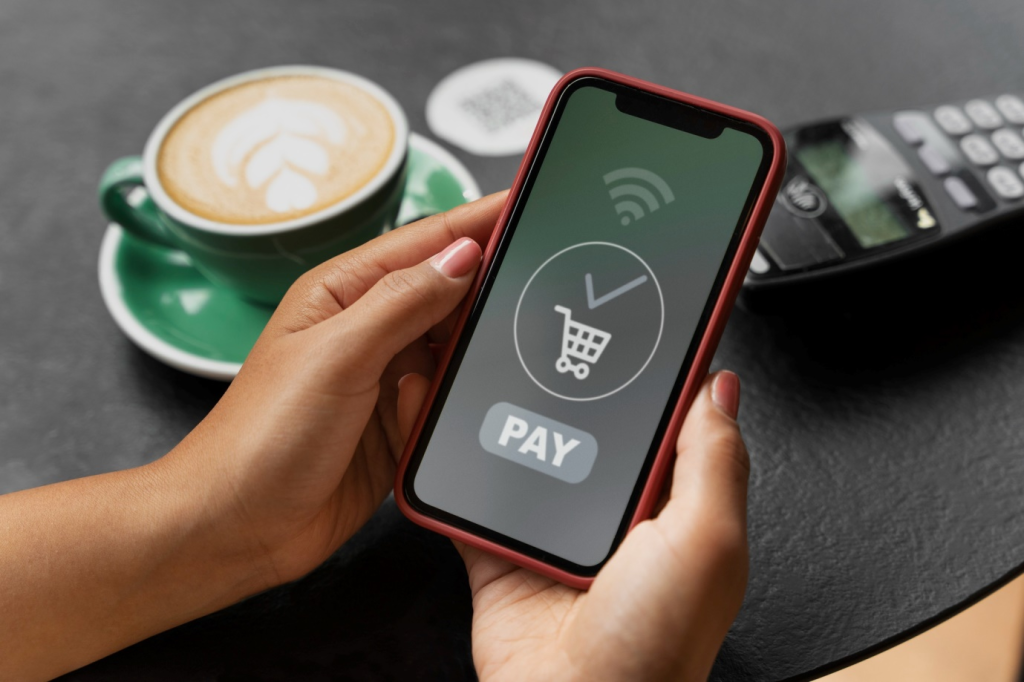If you’re in the fintech space, managing an e-wallet service, dealing with cryptocurrencies, or operating as a money services business (MSB), chances are you’re contemplating the development of a payment application. Peer-to-peer (P2P) payment apps have become indispensable tools for facilitating modern transactions. Such efficient, secure, and user-friendly payment solutions allow you to split bills with friends, make purchases, or transfer money internationally.

This comprehensive guide takes an in-depth look at the intricate process of building a P2P payment app, guiding you from its inception to its launch.
Payment apps: definition and types
A payment app allows individuals and businesses to send and receive money through an app.
When contemplating the development of a payment app, it’s imperative to integrate essential features such as account management, transaction history tracking, and strong user authentication to safeguard sensitive financial data.
Furthermore, modern payment apps incorporate advanced technologies like encryption and biometrics to bolster user privacy and prevent unauthorized access.
Four main types of payment apps
Four main categories define payment apps: standalone payment apps, bank-centric payment apps, social media payment services, and mobile payment applications.
Mobile payment apps
· Allow users to conduct transactions using their mobile devices.
· Simplify the process of purchasing goods and services through mobile platforms.
Peer-to-peer money transfer apps
· Facilitate direct transfer of funds between users.
· Simplify the process of splitting bills and sharing expenses digitally, eliminating the need for physical cash.
Digital wallets
· Store payment information securely and enable transactions both online and offline.
· Consolidate payment methods and provide a secure channel for completing transactions.
Cryptocurrency wallets
· Store and manage digital assets, facilitating transactions with multiple cryptocurrencies.
· Offer secure storage and support the sending and receiving of digital currencies such as Bitcoin and Ethereum.
Banking apps
· Offer customers access to their accounts and various banking services.
· Allow users to transfer funds, pay bills, and handle finances through a mobile app.
Retail and merchant apps
· Allow users to shop directly from businesses or retailers.
· Enhance the shopping journey through in-app payments and loyalty programs.
7 Steps to create a secure payment app
Here are 7 crucial steps that can help you to create a mobile payment app that meets the needs of modern users:
1. Define your goals and audience
The first step is to determine your app’s objectives and define your target audience. Decide whether your app will focus on facilitating peer-to-peer transactions, improving in-store mobile payments, or optimizing online purchases. Make sure to study all about current trends, competitor apps, and understand user preferences. Research popular payment apps like Apple Pay, Google Pay, PayPal, and Cash App to gather insights and align your app with user expectations.
2. Determine payment app features and requirements
You need to identify the required functionalities and strategize their integration into your app. Contemplate integrating advanced features such as contactless payments, biometric authentication, social payments, and cryptocurrency integration.
3. Legal compliance and security protocols
Legal compliance and security of your payment app are vital components for building user confidence. Particularly within the European Union, strict adherence to the General Data Protection Regulation (GDPR) is paramount. This involves implementing robust measures to safeguard user data and privacy. To further fortify your app’s security, integrate tools dedicated to detecting and preventing suspicious transactions. This proactive approach not only bolsters user protection but also ensures compliance with Anti-Money Laundering (AML) regulations. Incorporating a Know Your Customer (KYC) module seamlessly integrates identity verification processes into secure payment apps. This feature not only aligns with regulatory standards but also contributes to the overall security and transparency of your payment application.
4. Choose the right development strategy
There are two primary ways how to build a payment app:
Build software from scratch
Opting for custom development enables thorough customization, ensuring the app is tailored precisely to your requirements. However, this route may entail extended development timelines and higher initial investments due to resource-intensive processes.
Use a ready-made Core Banking Platform
Opting for a ready-made core banking system can substantially reduce both the time and costs associated with money transfer app development. Advapay introduces a cloud-based core banking Platform engineered to expedite the creation of your mobile payment app. With this readily available core banking software, you secure a sturdy foundation that accelerates app rollout and supports seamless scalability for diverse mobile wallet features.
5. Align with payment services providers
Establish integrations between your core banking or payment system and vital partners, including banks, payment gateways, or financial service providers. Seamless connections promote interoperability and facilitate a smooth transfer of funds between your enterprise and partnering organizations.
6. Design a user-friendly interface
Create a Seamless User Interface Building a payment app with an outstanding user interface (UI) and user experience (UX) is crucial for ensuring user satisfaction and adoption on mobile platforms.
7. Deploy your payment app
Once integration is finalized, deploy your payment app onto the chosen platform. Regularly monitor its performance and update your integration based on user feedback.
